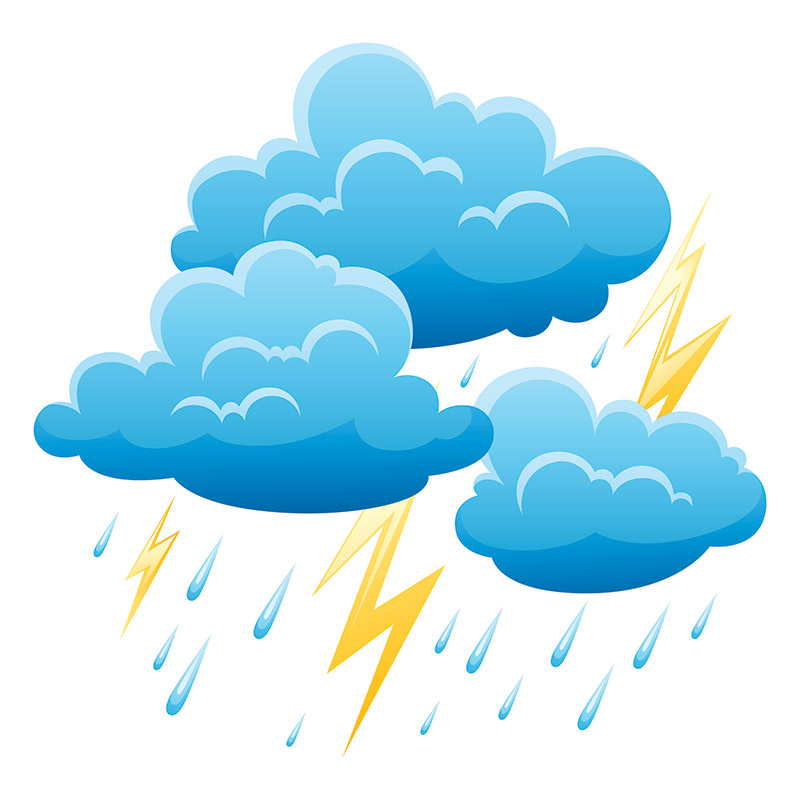"When thunder roars, go indoors.”
Safety in the Storms for All
Thunderstorms are common weather events characterized by the presence of thunder and lightning, often accompanied by strong winds, heavy rain, and occasionally hail. These storms typically develop when warm, moist air rises rapidly, creating atmospheric instability.
Characteristics of Thunderstorms:
- Lightning:
- A natural electrical discharge caused by imbalances between storm clouds and the ground. It can be dangerous and cause fires, injuries, or fatalities.
- Heavy Rain:
- Thunderstorms can produce heavy rainfall in a short period, leading to flash floods, landslides, and road hazards.
- Strong Winds:
- Gusts of wind associated with thunderstorms can reach high speeds, causing property damage, uprooting trees, and knocking down power lines.
- Hail:
- Some thunderstorms produce hailstones, which can vary in size, potentially damaging vehicles, crops, and buildings.
Downbursts:
A downburst is a sudden, powerful downward flow of air from a thunderstorm. They are intense and localized, creating strong straight-line winds near the surface. Downbursts can cause significant damage to structures, particularly in areas where the wind is funneled between buildings or valleys.
Emergency Preparedness Tips for Thunderstorms & Downbursts:
- Stay Informed:
- Keep track of weather forecasts and warnings. Follow news updates from trusted sources to stay aware of changing weather conditions.
- Mobility and Accessibility:
- Consider the mobility and accessibility needs of individuals during an emergency. Plan for transport and evacuation, if necessary. Ensure pathways are clear and well-lit.
- Seek Shelter:
- When thunderstorms are approaching, seek shelter in a sturdy building or a car. Avoid open fields, high ground, isolated trees, and bodies of water.
- Secure Outdoor Items:
- Bring indoors or secure outdoor furniture, toys, and other objects that could become projectiles in strong winds.
- Prepare an Emergency Kit:
- Assemble an emergency kit containing essential items like water, non-perishable food, flashlight, first aid supplies, and necessary medications.
- Stay Inside:
- Remain indoors during thunderstorms and avoid using electrical appliances, landline phones, or taking showers or baths as lightning can strike these areas.
- Post-Storm Caution:
- Be cautious after the storm has passed. Downed power lines, debris, and flooded areas pose dangers. Avoid puddles or flooded roads as they may hide hazards.

